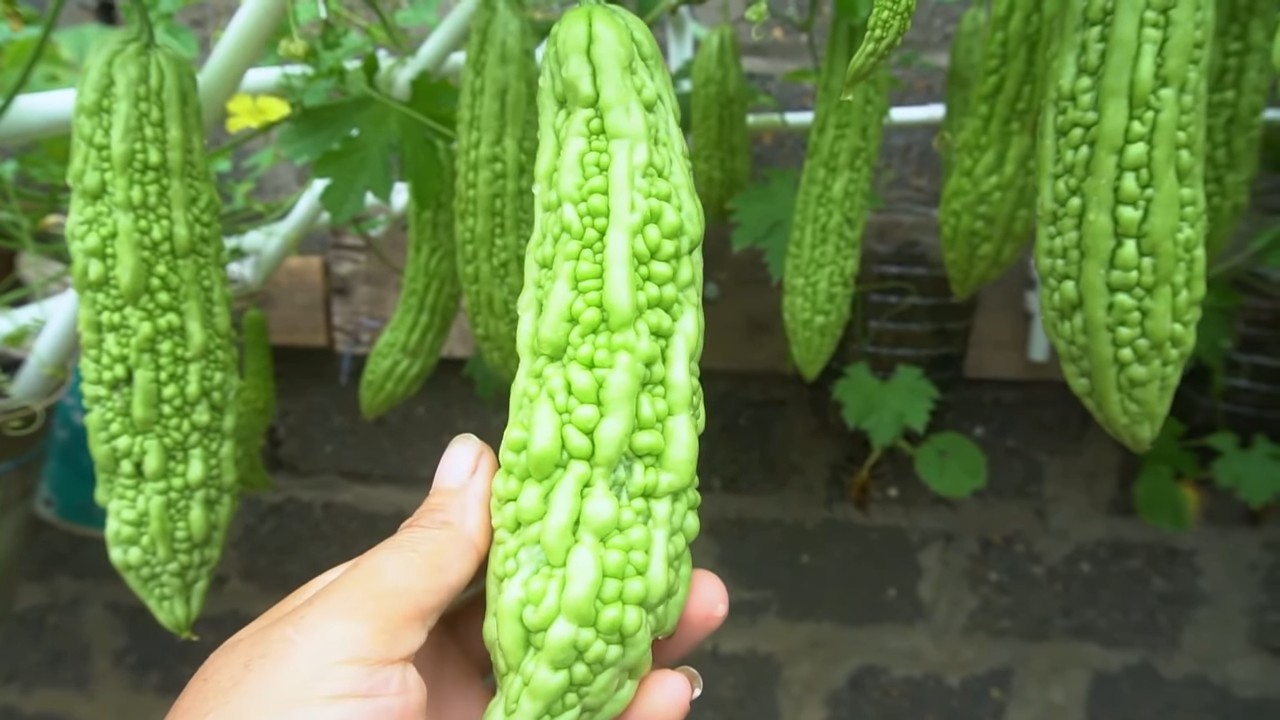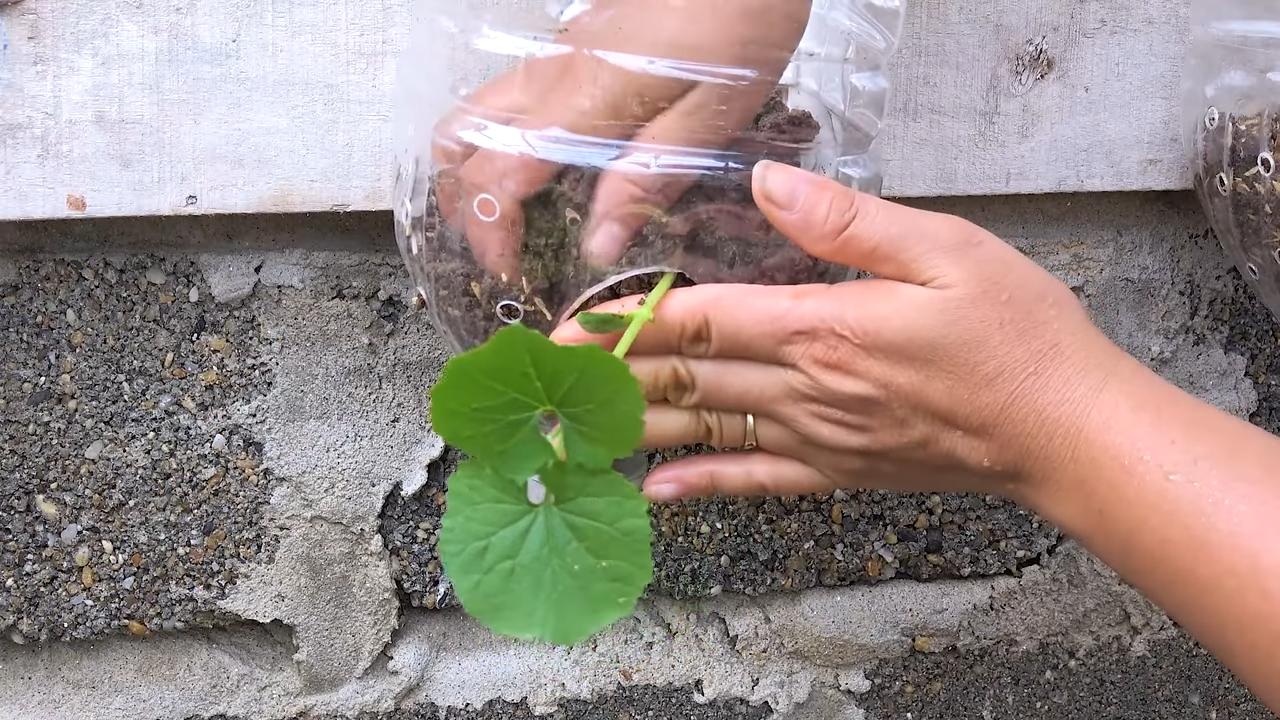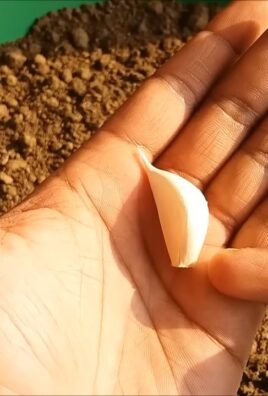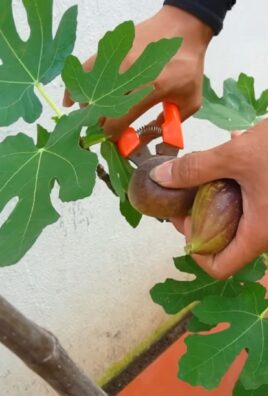Growing Bitter Melon Indoors might sound like a challenge, but trust me, it’s a rewarding adventure! Have you ever dreamt of harvesting fresh, vibrant bitter melon right from the comfort of your own home? Imagine the satisfaction of plucking a perfectly ripe fruit, knowing you nurtured it from seed to table, all without stepping foot outside. This DIY guide is your passport to that reality!
Bitter melon, also known as karela or bitter gourd, has a rich history deeply intertwined with traditional medicine and culinary practices across Asia and Africa for centuries. It’s not just a vegetable; it’s a cultural icon, celebrated for its unique flavor and purported health benefits. But let’s be honest, growing it in certain climates can be tricky. That’s where this DIY guide comes in!
Many gardeners struggle with successfully growing bitter melon indoors due to factors like limited space, unpredictable weather, or lack of knowledge about its specific needs. This article is designed to demystify the process, providing you with simple, step-by-step instructions and clever hacks to overcome these common hurdles. I’m going to share my best tips and tricks for creating the ideal indoor environment, from choosing the right container and soil to providing adequate light and support. So, get ready to unleash your inner gardener and enjoy the delicious, healthy bounty of homegrown bitter melon, no matter where you live!

Growing Bitter Melon Indoors: A Comprehensive DIY Guide
Hey there, fellow gardening enthusiasts! Ever thought about growing bitter melon indoors? It might seem a bit daunting, but trust me, with the right approach, you can absolutely cultivate this unique and nutritious vine right in your home. I’ve done it myself, and I’m here to share all my secrets!
What You’ll Need
Before we dive into the nitty-gritty, let’s gather our supplies. Here’s a checklist of everything you’ll need to successfully grow bitter melon indoors:
* Bitter Melon Seeds: Choose a variety that suits your taste and growing conditions. You can find these online or at your local garden center.
* Seed Starting Tray or Small Pots: These will be used for germinating the seeds.
* Seed Starting Mix: A light and airy mix is crucial for successful germination.
* Larger Pots (at least 10-12 inches in diameter): These will be the permanent homes for your bitter melon plants.
* Well-Draining Potting Soil: A mix rich in organic matter is ideal.
* Trellis or Support Structure: Bitter melon is a vine, so it needs something to climb on.
* Grow Lights (optional but recommended): Especially if you don’t have a sunny window.
* Watering Can or Spray Bottle: For gentle watering.
* Liquid Fertilizer: A balanced fertilizer to feed your plants.
* Pruning Shears or Scissors: For trimming and shaping the vine.
* Small Brush or Cotton Swab: For hand-pollinating the flowers (if needed).
Phase 1: Germinating Your Bitter Melon Seeds
Germination is the first hurdle, but don’t worry, I’ll guide you through it. Bitter melon seeds have a tough outer shell, so we need to give them a little head start.
1. Scarification: Gently nick the seed coat with a knife or sandpaper. Be careful not to damage the inner seed. This helps water penetrate and speeds up germination.
2. Soaking: Soak the seeds in warm water for 24-48 hours. This further softens the seed coat and encourages sprouting.
3. Planting: Fill your seed starting tray or small pots with seed starting mix. Make a small hole (about 1/2 inch deep) in the center of each pot.
4. Sowing: Place one seed in each hole and cover it gently with the seed starting mix.
5. Watering: Water the soil gently until it’s moist but not soggy.
6. Creating a Humid Environment: Cover the tray or pots with a plastic dome or plastic wrap to create a humid environment. This helps retain moisture and promotes germination.
7. Warmth: Place the tray or pots in a warm location (around 75-85°F). A heat mat can be helpful if your home is cooler.
8. Patience: Germination usually takes 7-14 days. Keep the soil consistently moist but not waterlogged. Once the seedlings emerge, remove the plastic cover.
Phase 2: Transplanting and Setting Up Your Bitter Melon Plants
Once your seedlings have developed a few true leaves (the leaves that appear after the initial seed leaves), it’s time to transplant them into their permanent pots.
1. Preparing the Pots: Fill your larger pots with well-draining potting soil. Make sure the pots have drainage holes to prevent waterlogging.
2. Carefully Removing Seedlings: Gently remove the seedlings from the seed starting tray or small pots. Be careful not to damage the roots.
3. Transplanting: Make a hole in the center of each pot large enough to accommodate the seedling’s root ball. Place the seedling in the hole and cover the roots with soil.
4. Watering: Water the newly transplanted seedlings thoroughly.
5. Setting Up the Trellis: Install your trellis or support structure in the pot. This could be a bamboo stake, a small trellis, or even a sturdy tomato cage. Make sure it’s tall enough to accommodate the vine’s growth.
6. Placement: Place the pots in a location that receives at least 6-8 hours of direct sunlight per day. If you don’t have enough natural light, use grow lights. I personally use LED grow lights and have had great success.
Phase 3: Caring for Your Bitter Melon Plants
Now comes the ongoing care to ensure your bitter melon plants thrive and produce a bountiful harvest.
1. Watering: Water your plants regularly, especially during hot weather. The soil should be consistently moist but not soggy. Check the soil moisture by sticking your finger about an inch into the soil. If it feels dry, it’s time to water.
2. Fertilizing: Feed your plants with a balanced liquid fertilizer every 2-3 weeks. Follow the instructions on the fertilizer label. I like to use a fertilizer that’s specifically formulated for vegetables.
3. Pruning: Prune your bitter melon vine regularly to encourage branching and fruit production. Remove any dead or yellowing leaves. You can also pinch off the tips of the vines to promote bushier growth.
4. Pollination: Bitter melon plants produce both male and female flowers. The female flowers have a small, immature fruit behind them. If you’re growing your plants indoors, you may need to hand-pollinate the flowers. Use a small brush or cotton swab to transfer pollen from the male flowers to the female flowers. I usually do this in the morning when the flowers are fully open.
5. Pest Control: Keep an eye out for pests such as aphids, spider mites, and whiteflies. If you spot any pests, treat them with insecticidal soap or neem oil. I prefer to use organic pest control methods whenever possible.
6. Temperature and Humidity: Bitter melon plants prefer warm temperatures (70-85°F) and high humidity. If your home is dry, you can increase the humidity by misting the plants regularly or placing a tray of water near them.
7. Air Circulation: Good air circulation is important to prevent fungal diseases. Make sure your plants have plenty of space around them and that the air is circulating freely. A small fan can help improve air circulation.
Phase 4: Harvesting Your Bitter Melon
The moment you’ve been waiting for! Harvesting your own homegrown bitter melon is incredibly rewarding.
1. Timing: Bitter melon fruits are typically ready to harvest about 2-3 months after planting. The fruits should be firm and green, but not too hard. They will start to turn yellow or orange as they ripen, but it’s best to harvest them before they become too ripe, as they will become more bitter.
2. Harvesting: Use a sharp knife or pruning shears to cut the fruit from the vine. Leave a small stem attached to the fruit.
3. Enjoying: Bitter melon can be used in a variety of dishes. It’s often stir-fried, stuffed, or used in soups and stews. The bitterness can be reduced by soaking the sliced melon in salt water for about 30 minutes before cooking.
Troubleshooting Tips
Even with the best care, you might encounter some challenges along the way. Here are a few common problems and how to address them:
* Yellowing Leaves: This could be a sign of overwatering, underwatering, nutrient deficiency, or pest infestation. Check the soil moisture, fertilize your plants, and inspect them for pests.
* Lack of Fruit: This could be due to poor pollination, insufficient sunlight, or nutrient deficiency. Hand-pollinate the flowers, provide adequate sunlight, and fertilize your plants.
* Slow Growth: This could be due to insufficient sunlight, cool temperatures, or poor soil. Provide adequate sunlight, maintain warm temperatures, and use well-draining potting soil.
* Pest Infestation: Treat pests with insecticidal soap or neem oil. You can also try introducing beneficial insects such as ladybugs or lacewings.
Additional Tips for Success
* Choose the Right Variety: Some bitter melon varieties are better suited for indoor growing than others. Look for compact varieties that don’t require as much space.
* Provide Adequate Support: Bitter melon vines can grow quite long, so make sure your trellis or support structure is sturdy enough to support the weight of the vine and the fruits.
* Rotate Your Plants: If you’re using grow lights, rotate your plants regularly to ensure that all sides receive equal light.
* Be Patient: Growing bitter melon indoors takes time and patience. Don’t get discouraged if you don’t see results immediately. Just keep providing the right care, and you’ll eventually be rewarded with a bountiful harvest.
Growing bitter melon indoors can be a fun and rewarding experience. With a little bit of effort and the right knowledge, you can enjoy fresh, homegrown bitter melon all

Conclusion
Growing bitter melon indoors might seem like a challenge, but the rewards are well worth the effort. This DIY trick, carefully cultivated and adapted for the home gardener, offers a pathway to fresh, homegrown bitter melon even if you lack a traditional garden space. Imagine the satisfaction of harvesting your own vibrant, nutrient-rich gourds, knowing exactly where they came from and how they were grown.
This method isn’t just about convenience; it’s about control. By cultivating your bitter melon indoors, you shield it from unpredictable weather, pests, and diseases that can plague outdoor crops. You have the power to create the ideal environment, optimizing temperature, humidity, and light to encourage vigorous growth and abundant yields.
But the benefits extend beyond the practical. Growing bitter melon indoors is a deeply rewarding experience, connecting you to the natural world and providing a sense of accomplishment as you nurture your plants from seed to harvest. It’s a chance to learn about plant life cycles, experiment with different growing techniques, and develop a deeper appreciation for the food you eat.
Ready to take your indoor gardening to the next level?
Don’t be afraid to experiment with different varieties of bitter melon. Some cultivars are better suited for container gardening than others. Consider trying smaller, more compact varieties that are specifically bred for indoor cultivation. You can also explore different trellis systems to support the vines as they grow. Vertical gardening is a great way to maximize space and create a visually stunning display.
Another variation to consider is hydroponic growing. While this requires a bit more investment and technical knowledge, it can significantly increase yields and reduce the risk of soilborne diseases. Hydroponics allows you to precisely control the nutrient supply to your plants, resulting in faster growth and healthier fruits.
Finally, remember that patience is key. Growing bitter melon indoors takes time and dedication. Don’t get discouraged if you encounter challenges along the way. Every gardener faces setbacks, and the key is to learn from your mistakes and keep experimenting.
We encourage you to try this DIY trick for growing bitter melon indoors and share your experience with us. Post photos of your plants, share your tips and tricks, and let us know what worked and what didn’t. Together, we can create a community of indoor gardeners who are passionate about growing their own food.
So, grab your seeds, prepare your containers, and get ready to embark on a rewarding journey of indoor gardening. With a little effort and dedication, you can enjoy fresh, homegrown bitter melon all year round. This DIY trick is your gateway to a healthier, more sustainable lifestyle.
Frequently Asked Questions (FAQ)
What is the best time of year to start growing bitter melon indoors?
Ideally, you should start your bitter melon seeds indoors about 6-8 weeks before the last expected frost. This will give your seedlings a head start and allow them to mature before being transplanted into larger containers. If you live in a warmer climate with a longer growing season, you can start your seeds earlier. However, if you have grow lights, you can technically start growing bitter melon indoors at any time of year, providing you can maintain the appropriate temperature and light conditions.
What kind of soil is best for growing bitter melon indoors?
Bitter melon prefers well-draining soil that is rich in organic matter. A good potting mix for indoor growing would consist of equal parts of peat moss, perlite, and vermiculite. You can also add compost or aged manure to improve the soil’s fertility and drainage. Avoid using garden soil, as it can be too heavy and may contain pests or diseases.
How much sunlight does bitter melon need when grown indoors?
Bitter melon requires at least 6-8 hours of direct sunlight per day. If you don’t have a sunny window, you can supplement with grow lights. LED grow lights are a great option because they are energy-efficient and provide the full spectrum of light that plants need to thrive. Position the grow lights about 6-12 inches above the plants and adjust as they grow.
How often should I water my bitter melon plants?
Water your bitter melon plants regularly, keeping the soil consistently moist but not waterlogged. Check the soil moisture level daily by sticking your finger into the soil. If the top inch feels dry, it’s time to water. Avoid overwatering, as this can lead to root rot. During hot weather, you may need to water more frequently.
What kind of fertilizer should I use for bitter melon?
Bitter melon is a heavy feeder, so it needs regular fertilization. Use a balanced fertilizer with an NPK ratio of 10-10-10 or 20-20-20. Apply the fertilizer according to the package instructions. You can also supplement with organic fertilizers such as compost tea or fish emulsion. Avoid over-fertilizing, as this can burn the roots.
How do I pollinate bitter melon flowers indoors?
Bitter melon plants have separate male and female flowers. In order to produce fruit, the female flowers need to be pollinated. Indoors, you’ll need to hand-pollinate the flowers. Use a small paintbrush or cotton swab to collect pollen from the male flowers and transfer it to the female flowers. The female flowers have a small, immature fruit behind the flower, while the male flowers do not. Pollinate the flowers in the morning, when they are most receptive.
What are some common pests and diseases that affect bitter melon?
Common pests that can affect bitter melon include aphids, spider mites, and whiteflies. These pests can be controlled with insecticidal soap or neem oil. Diseases that can affect bitter melon include powdery mildew and fungal leaf spots. These diseases can be prevented by providing good air circulation and avoiding overwatering. If you notice any signs of pests or diseases, treat them promptly to prevent them from spreading.
How long does it take for bitter melon to mature?
Bitter melon typically takes 60-90 days to mature after planting. The fruits are ready to harvest when they are still green and firm. If you wait too long, the fruits will turn orange and become bitter. Harvest the fruits regularly to encourage the plant to produce more.
Can I grow bitter melon in a small container?
While bitter melon vines can get quite large, you can successfully grow them in containers. Choose a container that is at least 12 inches in diameter and 12 inches deep. Make sure the container has drainage holes to prevent waterlogging. You may need to prune the vines to keep them manageable.
What are some creative ways to use homegrown bitter melon?
Homegrown bitter melon can be used in a variety of dishes. It can be stir-fried, stuffed, or added to soups and stews. It can also be juiced or pickled. Bitter melon has a distinctively bitter taste, so it’s often paired with other ingredients that can balance out the bitterness. Some popular recipes include bitter melon with eggs, bitter melon with black bean sauce, and bitter melon soup. Experiment with different recipes and find your favorite way to enjoy this nutritious vegetable.




Leave a Comment